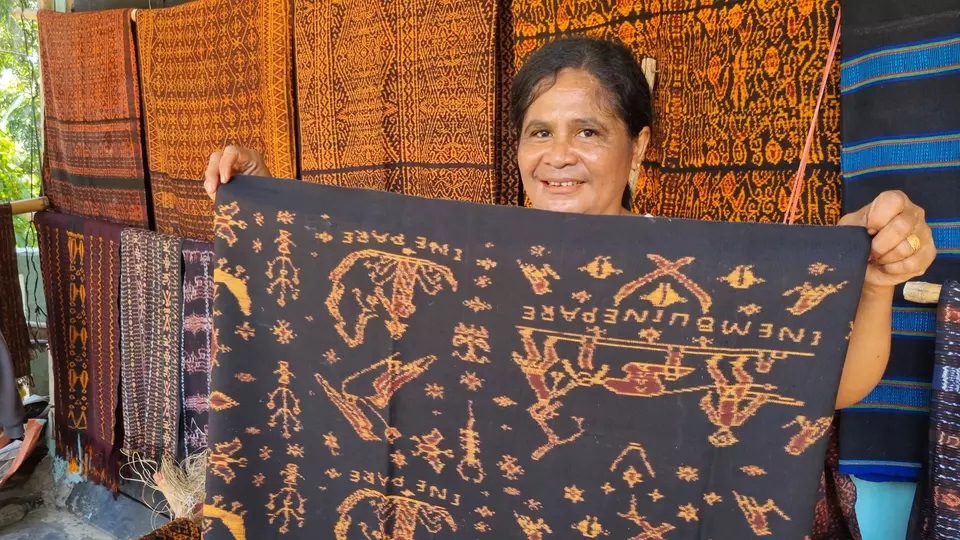News
How Nuamuri's East Nusa Tenggara-Style Tenun is Made
WINDONESIA July 16, 2024 The weaving of Nuamuri Village's characteristic tenun fabric. (Beritasatu.com/Maria Gabrielle Putrinda).
The weaving of Nuamuri Village's characteristic tenun fabric. (Beritasatu.com/Maria Gabrielle Putrinda).
East Nusa Tenggara's style of tenun fabric is a distinctive handicraft that attracts many tourists. Nuamuri Village in Mbuli Lo'o Subdistrict, Wolowaru District, Ende Regency, is one of the tenun-weaving villages in the province.
It turns out that creating a single piece of tenun fabric with natural dyes can take several months.
"For the authentic ones, the process can take about seven months because we also have other activities. For the less authentic ones, it can be quicker, about two months," Mensi, one of the weavers in Nuamuri Village, explained on Jul. 10, 2024.
A piece of tenun fabric typically measures about three meters in length and 78 centimeters in width. The duration of the weaving process also depends on the complexity of the motifs created.
"The motifs of the tenun vary. The process for making more intricate and complicated motifs takes longer, especially with natural dyes," Mensi elaborated.
Natural dyes used include candlenut, ginger, betel leaf, bird’s eye chili, and salt. So, how is the weaving process done?
"First, the yarn is spun from kapok and made into threads. Then, the threads are stretched out to create the motif. After the motif is made, the threads are soaked in water, and then we look for natural dyes," Mensi explained.
Once the desired color is achieved, the threads with the motif are soaked for three days. Then, the threads are stiffened with a thick tamarind seed brew.
After this process, the threads can finally be woven. Due to the intricate and time-consuming process, the tenun fabric is sold for millions of rupiah.
One of the displayed tenun fabrics features a black base color with reddish-brown motifs. The fabric includes the words ine pare or "mother of rice," a mythology about the origin of rice believed by the Lio people, along with images of various animals.
"The price starts at Rp3.5 million (for the cheapest), but this one is more expensive, over Rp5 million because the threads are spun from kapok, and the colors are different as they come from roots, soaked for months before achieving this result," she concluded.

